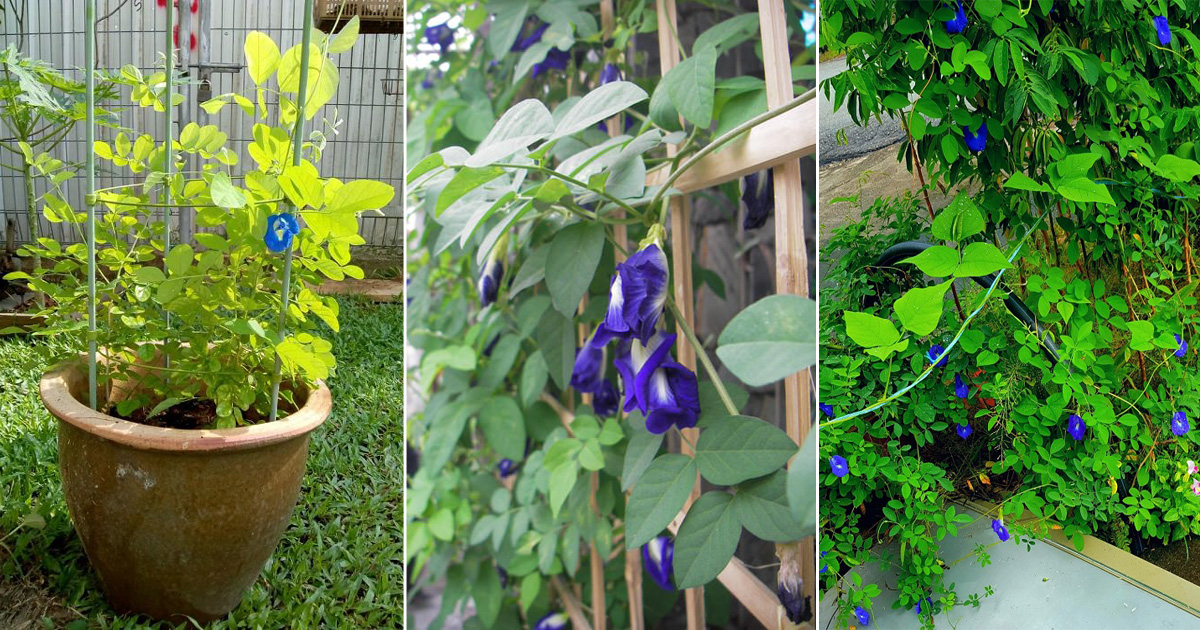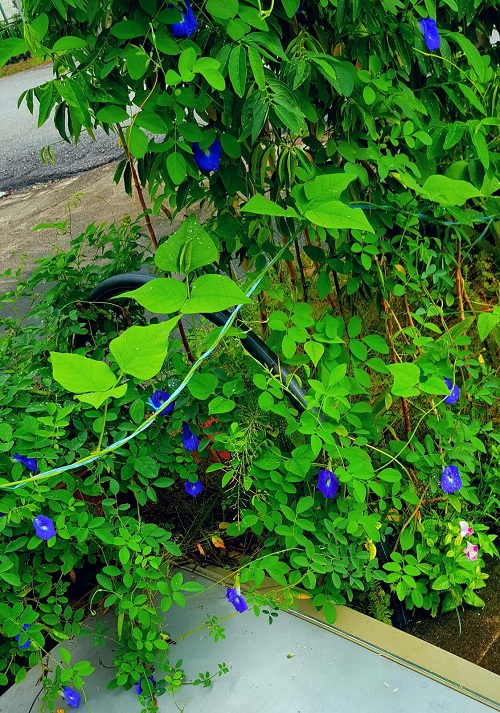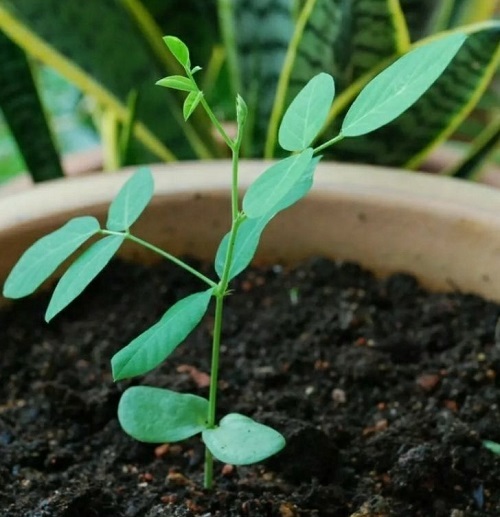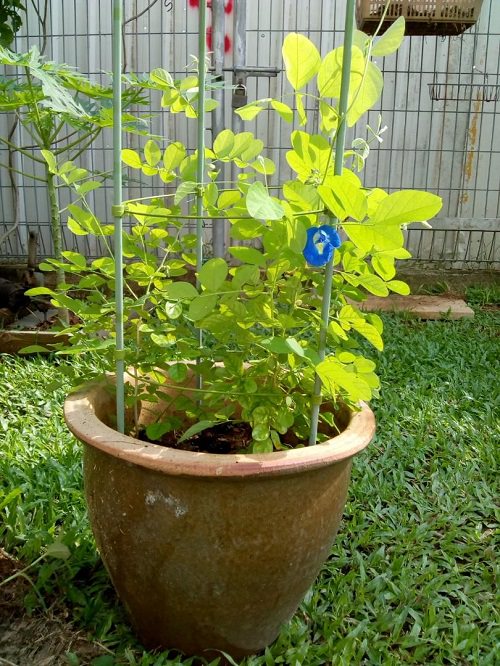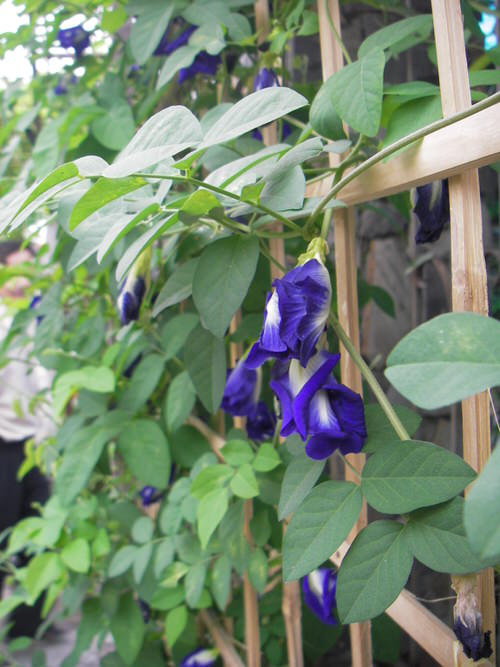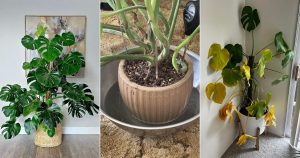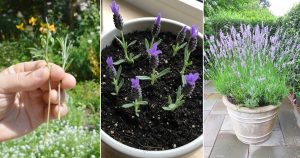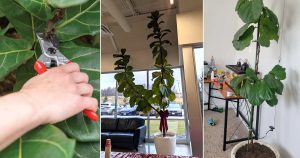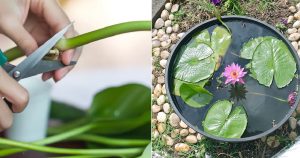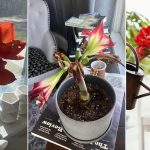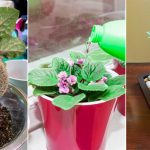Butterfly Pea plants offer edible flowers that are used in Asian cuisines and beverages as a natural food coloring agent.
The butterfly pea plant (Clitoria ternatea) is a tropical, perennial vine from Indonesia. It produces blue, purple, and white flowers that are popular for their natural dye properties. This short-living perennial is primarily grown for its showy blossoms.
This climbing plant also yields long, flat pods with six to ten peas inside, which can be eaten when picked young. It can reach up to 10 feet long and has a twining growth pattern that keeps it tidy three feet tall. The mid-green leaves are broad at the base.
The blue flowers of the butterfly pea plant are edible and used as a natural food dye in Asian cooking. They are often added to drinks and are key ingredients in “Butterfly Pea Tea.” Additionally, the butterfly pea plant is commonly grown for decorative purposes and for its ability to improve soil fertility by fixing nitrogen.
Common Name: Butterfly Pea Plant, Asian Pigeon Wings, Blue Pea
Botanical Name: Clitoria ternatea
Propagating Butterfly Pea
You can grow butterfly pea plants from cuttings of a healthy mature plant. Use clean pruning shears and cut 3-5 inches long cutting with a bud of an old, woody portion of the plant. Discard the lower leaves and insert the cuttings in a glass of water or plant in a pot filled with well-draining soil.
The roots will appear in two to three weeks. Place the plant in a warm location and keep the soil moist. Also, protect the young plants from afternoon sunlight.
Container Size
Use a pot that is 6 inches deep and 12 inches wide. Make sure the container has sufficient drainage holes.
Requirements for Growing Butterfly Pea Plants
Location
It needs plenty of bright, direct light for up to 6-10 hours daily. Do not place the plant in shaded areas.
Soil
Butterfly pea plants can tolerate any kind of soil. However, it grows well in slightly sandy, fertile, well-draining soil with a pH range between 6.0 to 8.0.
Water
Butterfly pea seedlings grow well with an inch of water each week. After they are established, they become drought-resistant and require extra watering only during hot, dry periods. To prevent fungal infections such as powdery mildew, it is best to water at the soil level and keep the leaves dry.
Temperature and Humidity
The butterfly pea plant thrives in warm, humid conditions with temperatures ranging from 70 to 100 F. It is only hardy in USDA zones 9 through 11 and cannot withstand frost. In regions where temperatures regularly drop below 60 F, it is typically grown as an annual or kept in pots. For indoor planting, regular misting is recommended to maintain adequate humidity.
Butterfly Pea Plants Care
Fertilizer
Apply compost, aged manure, or balanced NPK fertilizers while planting and twice annually after pruning.
Pollination
Both male and female parts of the plant are self-pollinating. However, the blooms need support from bees to finish pollination and feeding for the plant to form peas.
Indoor potted plants cannot produce fruits until they are hand-pollinated.
Pruning
Prune the plant to keep it in good shape. Deadheading is also essential to promote flowering. Prune the plant by snipping the growing tips. If you want edible seeds or want them for propagation, leave blooms on the vine. You can harvest the peas when they are small or take off the pods when they turn dry or brown.
Overwintering
If you live in north zone 9, move the outdoor potted plants indoors when the average daily temperature drops below 60 F. Keep the plant in an area with at least 6 hours of direct sunlight. Avoid placing pots near drafty spots.
Mist the plant regularly or install a humidifier. Water the plant when the topsoil turns dry and prune the plant when required.
Pests and Diseases
This plant is not susceptible to many pests and diseases. Though aphids and spider mites can be a threat. You treat this issue by using a horticultural oil or knock down them by a strong spray of water.
Also, avoid overwatering, which can cause mold, mildew, and bacterial soft rot.
Toxicity
This plant is not poisonous; all parts of butterfly peas can be consumed, and they are potable.
Harvesting Butterfly Pea
This plant is grown for its blooms rather than the edible peas. You can harvest flowers fresh, dried, or wilted. For harvesting, remove blooms to activate the growth of the pod. Harvest pods before peas become large; otherwise, they turn tasteless and tough. You can harvest seeds until the pods are dry and brown.

